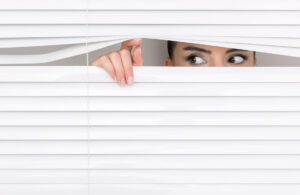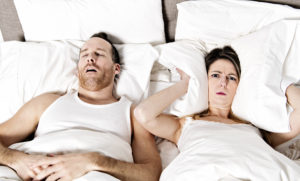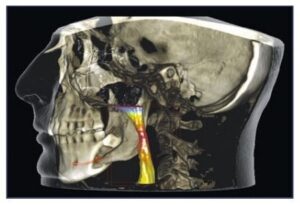
The confinement and “sheltering in place” of the pandemic seem to be in the distant past. However, some habits formed during the time of being shut in were not so great. During this time, psychologists noted a range of sleep changes; some people were sleeping more while others (especially those with children at home) dealt with shortened schedules or delayed schedules. 
Studies found that upended routines were compromising to sleep as the boundaries between work and private life dissolved. In turn, there was an increase in problems that interfered with a good night’s sleep, such as insomnia, sleep apnea, night sweats and trouble falling asleep.
The pandemic also caused disruptions to sleep by people having less sunlight exposure, irregular mealtimes, and greater alcohol use. For people working or learning from home, these factors can interfere with the body’s natural circadian rhythms, exacerbating sleep problems. These can include trouble falling/staying asleep, earlier wake-up times, poor sleep quality, disrupted sleep cycles, and vivid dreams or nightmares.
Since the pandemic began, 2 in 3 Americans report they are now sleeping either more or less than desired. And this is not just a problem of Americans; it’s apparently global. Researchers around the world have documented a surge in sleep disorders, with common sleep disorders including:
Insomnia – characterized by difficulty falling asleep or staying asleep, often accompanied by daytime fatigue, poor concentration, and irritability.
Narcolepsy – most typically seen in teens or people in early 20s and characterized by an overwhelming sleepiness.
Parasomnias – includes behaviors that occur during sleep, such as sleep walking, night terrors and bedwetting.
Sleep Apnea – pauses in breathing during sleep, which are often followed by loud snoring and/or choking or gasping to resume breathing. (Sleep apnea has been associated with hypertension, heart disease and increased risk of stroke.)
Having advanced training and skills in neuromuscular dentistry, I have a unique understanding of the hazards of disrupted sleep. Although dentistry is thought to be skills confined to the mouth, a neuromuscular dentist considers the entire structures of the head and neck, including the interactive mechanisms of bone, tissues, muscles and ligaments.
As part of these structures, airway passages are taken into consideration as integral to the overall crainiofacial structure. Heavy snoring and sleep apnea are common problems when it comes to airway blockage, leading to interferences with sleep.
There is no doubt that insufficient sleep is linked to poor health. For adults, getting less than seven hours of sleep a night on a regular basis, it can lead to weight gain, obesity, diabetes, high blood pressure, heart disease, stroke, and depression, and less efficiency with immune function.
During sleep, your immune system releases proteins called cytokines, some of which help promote sleep. Certain cytokines need to ramp up to ward off an infection or inflammation, or when under stress. Sleep deprivation may decrease production of these protective cytokines. In addition, infection-fighting antibodies and cells are reduced during periods when you don’t get enough sleep. Hence, lack of sleep can also extend recovery times from illnesses.
All ages need a certain amount of “sound” sleep for good health. A recommended amount of sleep for different age groups is:
Infants 4 – 12 mos: 12-16 hrs per 24 hrs, including naps
1-2 yrs: 11-14 hrs per 24 hrs, including naps
3-5 yrs: 10-13 hrs per 24 hrs, including naps
6-12 yrs: 9-12 hrs per 24 hrs
13-18 yrs: 8-10 hrs per 24 hrs
Adults: 7 or more hrs per night
Along with the quantity of sleep one gets, the quality of sleep has a great deal with the rejuvenating and health benefits of “a full night’s sleep.” Interferences can be:
• Sleep that is frequently interrupted due to sleep disorders (such as sleep apnea)
• Previous sleep deprivation
• Pregnancy, that includes changes in hormone levels and physical discomfort
• Aging adults who tend to sleep more lightly, take longer to fall asleep, sleep for shorter periods, and wake up during the night for bathroom visits
Sleep disorders affect more than 70 million people in the United States. In fact, one-third of all adults experience insomnia, and two to four percent of middle-aged adults have significant breathing disorders during sleep.
Sleep disorders can have a significant impact on quality of life, leading to:
Work absences or poor work performance due to fatigue
Memory and concentration problems
Depression
Habitually irritable and short-tempered
Having sexual problems
Dangerous situations such as falling asleep while working or driving
Typical symptoms of a sleep disorder can include:
• Loud snoring
• Feeling tired all the time
• Difficulty falling and staying asleep
• Waking up frequently at night
• Jerking or twitching in legs
• Walking, punching or kicking during sleep
• Gasping or choking at night
• Recurrent nightmares
• Early morning awakenings
• Morning headaches
• Impotence
As many as 4% of men and 2% of women suffer from sleep apnea, making it one of the most common sleep disorders in the United States. Unfortunately, many go undiagnosed as their symptoms are not always associated with sleep apnea. An estimated 22 million American adults suffer from sleep apnea with 80% of people with moderate to severe sleep apnea going undiagnosed.
In the past, a C-PAP device has been the standard “solution” for Sleep Apnea patients. These devices use a fan to push air into the throat. The challenge has been to get those prescribed for a CPAP to wear these. It is estimated that only 22% of those prescribed a CPAP wear theirs consistently.
According to literature featured in Frontiers in Psychology (“Improving CPAP Adherence in Adults With Obstructive Sleep Apnea Syndrome: A Scoping Review of Motivational Interventions”):
8 to 15% of patients with OSAS refuse CPAP treatment after the first night and that at least 50% of individuals discontinue its usage within 1 year from the treatment beginning
Fortunately, an alternative is available for people who have mild to moderate levels of Sleep Apnea. In our Shelby Twp dental office, we create custom-contoured, FDA-approved oral appliances for heavy snorers and sleep apnea sufferers. These are about the size of a mouth guard and do not interfere with sleep. They are designed to gently adjust the jaw’s position so the throat is more open during sleep. Rather than force air into your throat, oral appliances make air intake, on your own, easy.
According to the American Academy of Dental Sleep Medicine, “Oral appliance therapy is an effective treatment option for snoring and obstructive sleep apnea (OSA). A custom-fit oral sleep appliance can improve your sleep, restore your alertness and revitalize your health.”
They also state the advantages as:
• Comfortable
• Easy to wear
• Quiet
• Portable and convenient for travel
• Easy to care for
Our Macomb County dental office has helped many patients achieve excellent success in overcoming heavy snoring and/or sleep apnea. Although some dentists offer the devices as an add-on to dental services, we do not use a one-size-fits-all approach. These appliances can vary a great deal based on the knowledge and skills of the dentist fitting it to your unique oral contours.
Too, we use advanced imaging technology to detect precisely where airway interferences may exist. This helps us to create the most comfortable and effective appliance for your individual needs.
Begin with a free, no obligation consultation appointment to have your questions answered thoroughly. Call 586-739-2155 or tap here to begin. You may also wish to submit your level of needs through a brief Sleep Questionnaire at: Sleep Questions
In the meantime, you may want to read up on some good sleep tips at: DrBarbatSleepTips
And, get to know our comprehensive dental office at: DrBarbatOfficeTour
Sources include:
https://link.springer.com/article/10.1007/s11920-015-0554-4
https://www.apa.org/monitor/2021/06/news-concerns-sleep
Website of the American Academy of Sleep Medicine: https://sleepeducation.org/
https://aadsm.org/oral_appliance_therapy.php
https://www.frontiersin.org/articles/10.3389/fpsyg.2021.705364/full